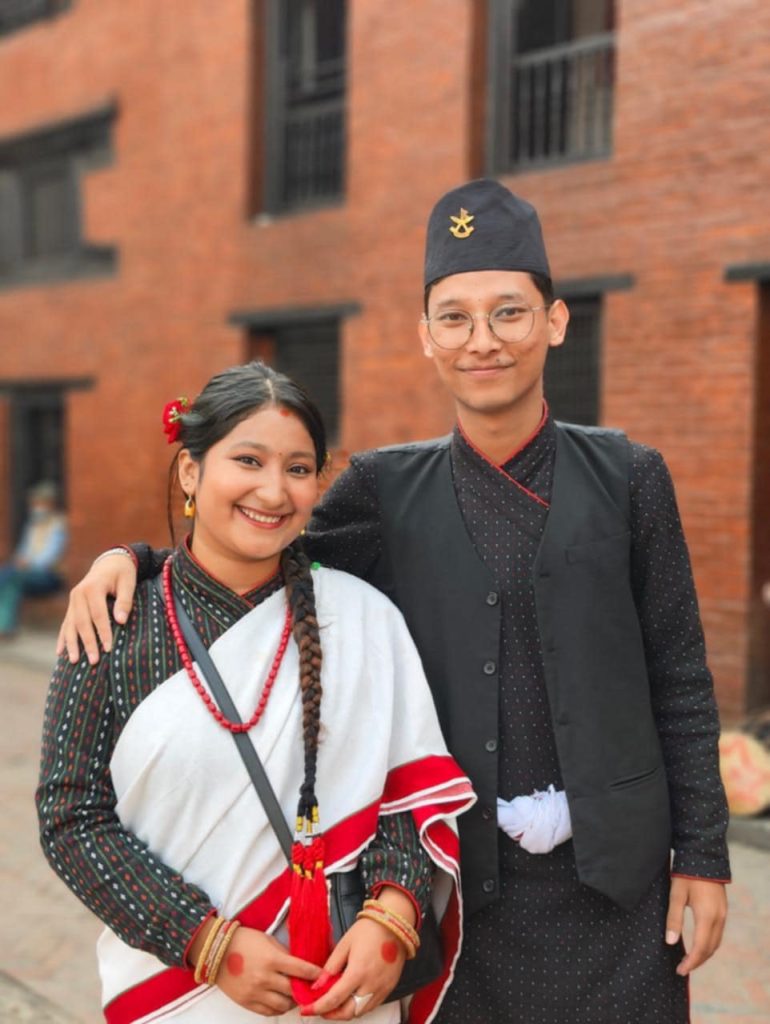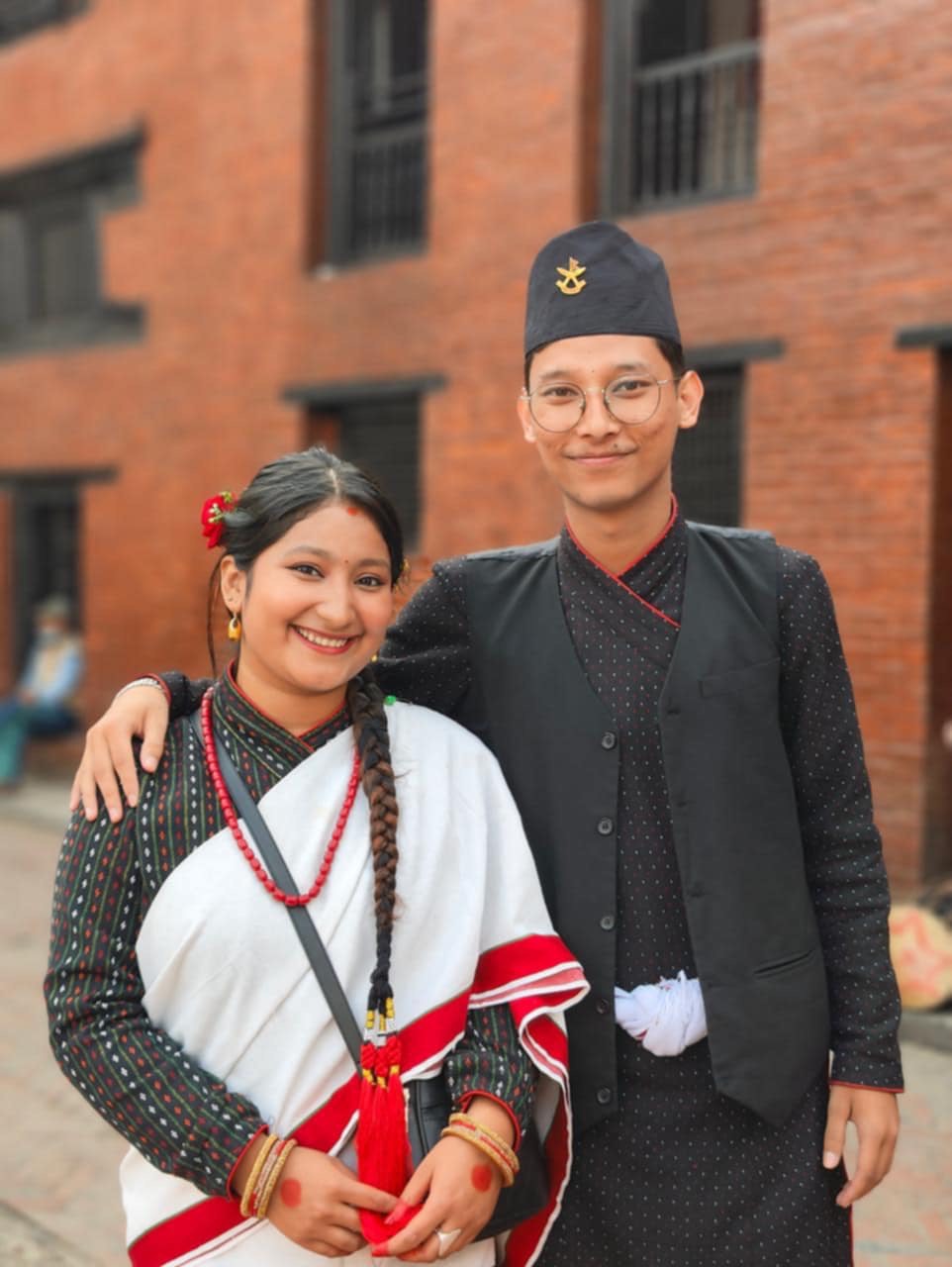What is Newari Culture?
Newari culture is a beautiful and unique way of life that belongs to the Newar people, one of the oldest ethnic groups in Nepal. Known for their rich traditions, colorful festivals, delicious cuisine, and beautiful attire, the Newars have shaped much of Nepal’s cultural history. The Newari culture is a blend of Hindu and Buddhist practices, making it one of the most vibrant and diverse cultures in the world. In this blog, we will explore what makes Newari culture so special, covering their traditional attire, cuisine, rituals, festivals (called “jatras”), and other traditions.
Understanding Newari Culture
Newari culture is a lively mixture of art, music, dance, and community spirit. This culture is centuries old, with roots tracing back to the Kathmandu Valley. Newars have always been known for their skills in art, crafts, and architecture. You can see examples of their craftsmanship in the beautiful temples, stupas, and traditional buildings around Kathmandu, Patan, and Bhaktapur. The daily lives of Newars are filled with vibrant customs and traditions, which make their culture distinct and fascinating.
Traditional Newari Attire
The Newars have their own unique style of clothing, which they wear on special occasions, festivals, and rituals. Newari attire includes several types of garments for men and women, each with its unique design and cultural meaning.
– For Men: Newari men traditionally wear a black outfit called “Haku Patasi” paired with a shawl or waistcoat. They also wear a unique cap called a “topi,” which completes the look. During festivals, men sometimes wear traditional jewelry, adding a touch of sparkle.
– For Women: Newari women are known for wearing a beautiful dress called the “Gunyu Cholo.” It is usually black with a red border. Women also wear a long shawl, known as a “patuka,” around their waist, and a “matha” (scarf) on their shoulders. To enhance their beauty, Newari women often wear jewelry such as golden necklaces, earrings, and anklets, especially during weddings and festivals.
These traditional Newari clothes are not just for style; they represent the Newars’ deep-rooted connection to their heritage and serve as a reminder of their unique cultural identity.
Newari Cuisine
Food plays an essential role in Newari culture, and Newari cuisine is loved for its bold flavors and variety. Newars are famous for their cooking skills, and their dishes are known for being spicy, tangy, and full of flavor. Many Newari dishes are vegetarian, but they also have non-vegetarian dishes, often made with buffalo meat.
Some popular Newari foods include:
– Samay Baji: This is a traditional Newari dish that is a combination of beaten rice, boiled egg, spicy potatoes, soybeans, pickles, and meat. Samay Baji is a common meal served during festivals and family gatherings.
– Yomari: Yomari is a sweet dumpling filled with molasses and sesame seeds. It is a special treat during the winter season and the Yomari Punhi festival.
– Chatamari: Often called “Newari pizza,” Chatamari is a thin rice-flour crepe topped with minced meat, vegetables, and eggs.
– Aila: Aila is a traditional Newari alcoholic drink made from fermented rice. It is very strong and is often served during festivals and rituals.
Each Newari dish has its unique taste and is prepared with care. Food is seen as a blessing, and sharing meals with family and friends is an essential part of Newari traditions.
Newari Rituals
Newari culture has many rituals that mark important events in life, from birth to death. These rituals are deeply spiritual and include both Hindu and Buddhist elements, reflecting the Newars’ beliefs.
1. Birth Rituals: When a child is born, the family performs a ritual called “Pasni,” or the rice-feeding ceremony. It is the first time the child eats solid food, usually at the age of six months for boys and five months for girls. Family members and friends gather to bless the child and celebrate this special day.
2. Marriage Rituals: Newari marriages are grand and colorful, involving several unique ceremonies. In one important ceremony called “Ihi” or “Bel Bibaha,” young Newari girls marry a bel fruit (a type of fruit believed to represent Lord Vishnu) before marrying a human. This ritual is said to protect the girl and is considered her first marriage.
3. Death Rituals: The Newars perform detailed death rituals, which honor the deceased and ensure they reach the afterlife. The family performs specific ceremonies and rituals for 13 days, offering prayers and food to the deceased’s spirit.
These rituals are a significant part of Newari culture. They honor family, religion, and the cycle of life, connecting each Newar to their ancestors and future generations.
Newari Jatras (Festivals)
Festivals are a big part of Newari culture, and the Newars celebrate many of them throughout the year. Known as “jatras,” these festivals are vibrant, filled with music, dance, feasts, and lots of colors. Here are some popular Newari jatras:
1. Indra Jatra: This festival is celebrated in Kathmandu in honor of Lord Indra, the god of rain. It includes traditional dances, masked processions, and the appearance of the living goddess, Kumari. People believe that by celebrating Indra Jatra, they will receive good rain and a good harvest.
2. Bisket Jatra: This festival is celebrated in Bhaktapur and marks the start of the New Year. A large chariot is pulled through the streets, and locals come together to sing, dance, and celebrate. Bisket Jatra is a thrilling event and is enjoyed by thousands of people.
3. Ghode Jatra: Also known as the “Festival of Horses,” Ghode Jatra is celebrated to ward off evil spirits. A horse parade and horse racing are held in Tundikhel, Kathmandu, while the Newar community celebrates with music, dance, and special foods.
These jatras are not only joyful celebrations but also a way for Newars to honor their gods and ancestors. They bring the community together, strengthening the bonds between families and friends.
Newari Traditions and Beliefs
Newari traditions are filled with stories and beliefs that make their culture even more fascinating. Here are a few unique Newari customs:
– Respect for Elders: In Newari culture, respecting elders is very important. Young people bow down and touch the feet of their elders to show respect. During special occasions, the younger family members seek blessings from the older ones.
– Kumari Worship: The Newars believe in the living goddess, Kumari. Kumari is a young girl chosen to be the human form of the goddess Taleju. She lives in the Kumari Ghar (Kumari’s Palace) in Kathmandu and is worshipped during festivals like Indra Jatra. The worship of Kumari is one of the unique aspects of Newari culture.
– Newari Calendar: The Newars have their own lunar calendar, called “Nepal Sambat.” They use this calendar for festivals and important dates, which is different from the regular Gregorian calendar.
These traditions highlight the values and beliefs that have been passed down from generation to generation in Newari culture.
The Beauty of Newari Culture
Newari culture is truly a treasure of Nepal, filled with love, respect, art, and tradition. From their traditional attire to their flavorful cuisine, from joyful jatras to meaningful rituals, the Newars have preserved their culture with great pride. Each aspect of Newari culture reflects their deep respect for family, community, and spirituality. Whether through dance, food, or festivals, Newari culture brings people together and reminds them of their shared heritage.
If you ever visit Nepal, especially the Kathmandu Valley, you will see Newari culture alive in the streets, temples, and people’s homes. Observing and understanding this culture gives us insight into a way of life that has been nurtured for hundreds of years.


